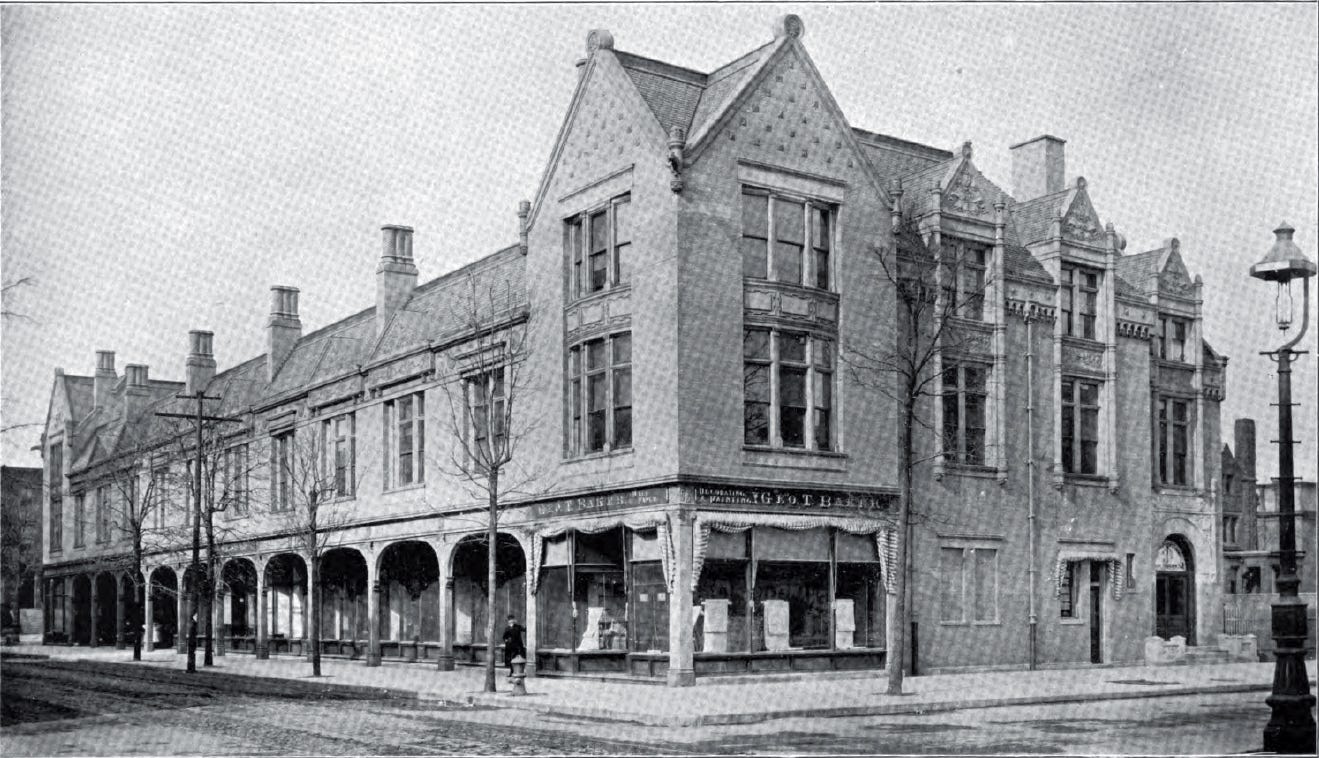Tree Studios: Supporting the Arts Even During a Depression (and maybe because of)
Meet the couple who turned their backyard into an artist colony.
Each week, discover an historic Chicago landmark and meet the people who built the Windy City. Includes audio recorded by Jim Goodrich.
Smack dab in the middle of the River North and Magnificent Mile neighborhoods sits what had been one of the oldest artists' colonies in the country. Lined up on State Street between Ontario and Ohio, Tree Studios rented space at reduced rates to artists. It began when the Trees, world-travelers and dedicated supporters of the arts, decided to build an Art Palace in their backyard.
The year was 1894 and the economy was shattered. The Panic of 1893 had started a nationwide depression that would continue for years. Banks closed, businesses failed, including even seemingly infallible railroads, and laborers went on strike.
In Chicago, the glow from the World’s Columbian Exposition, which opened about the time the panic began, had quickly worn off as the White City disappeared. Workers who’d found temporary jobs during the fair were suddenly unemployed and Chicago was overrun with the destitute and homeless.
In the midst of this despair, Lambert and Anna Tree decided to open, of all things, an artists colony. The wealthy couple lived on an entire city block bounded by Ontario, Ohio, State, and Cass (now Wabash) Streets.
His Chicago pedigree stretched back to 1856. Hers, all the way to 1832. Subscribers to society rags Elite and Figaro could follow the Trees’ comings and goings, whether it was a jaunt to the Northwest for a holiday, a reception at the Palmers’ for Baron and Baroness Hengelmüller, or a European visit with their son and his wife Ethel, Marshall Field’s daughter. They were philanthropists and supporters of the arts, which meant the usual memberships on various boards and lots of donations.
There were signs, however, that maybe this couple was a bit more dedicated than their wealthy peers.
Keep reading with a 7-day free trial
Subscribe to Living Landmarks of Chicago to keep reading this post and get 7 days of free access to the full post archives.





